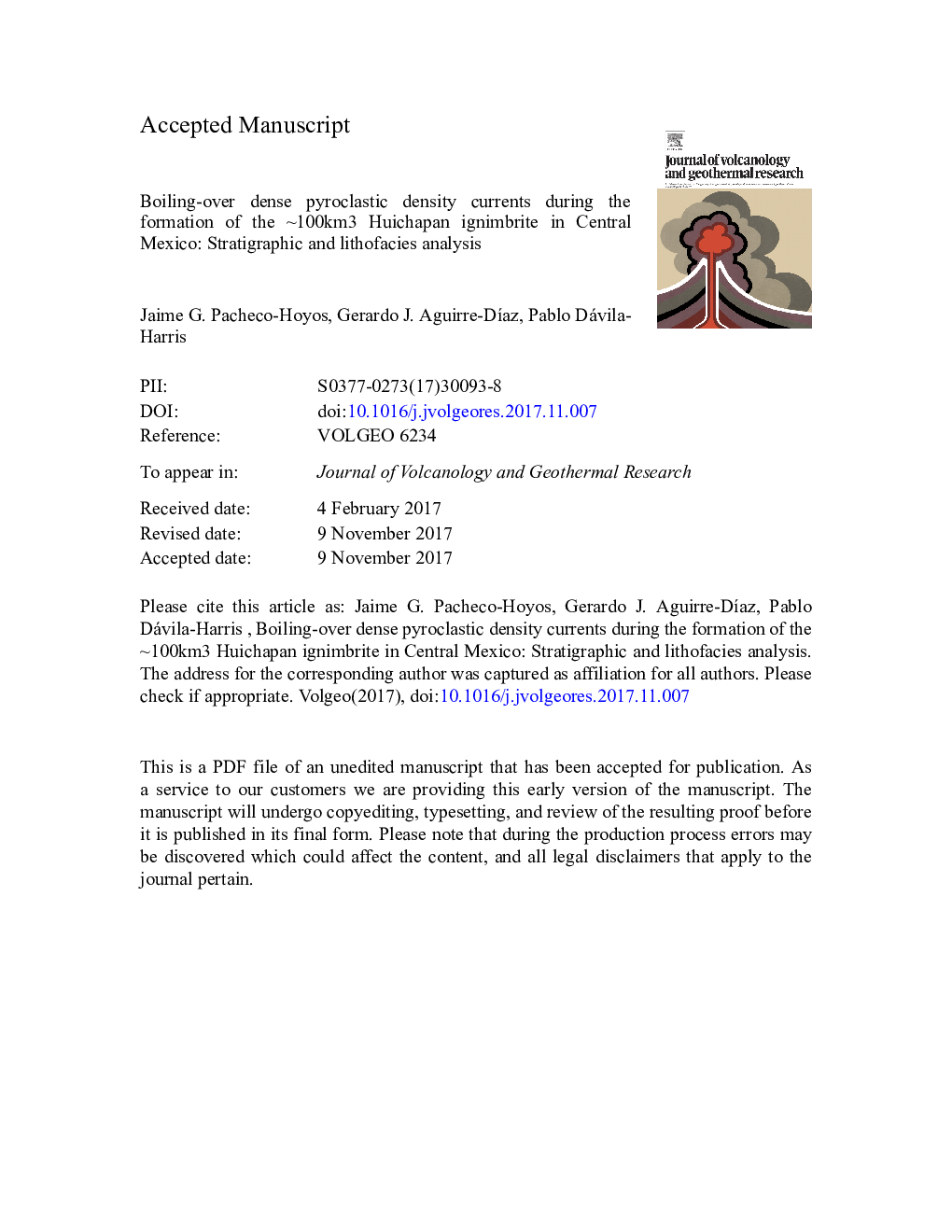| کد مقاله | کد نشریه | سال انتشار | مقاله انگلیسی | نسخه تمام متن |
|---|---|---|---|---|
| 8911431 | 1638274 | 2018 | 46 صفحه PDF | دانلود رایگان |
عنوان انگلیسی مقاله ISI
Boiling-over dense pyroclastic density currents during the formation of the ~Â 100Â km3 Huichapan ignimbrite in Central Mexico: Stratigraphic and lithofacies analysis
دانلود مقاله + سفارش ترجمه
دانلود مقاله ISI انگلیسی
رایگان برای ایرانیان
موضوعات مرتبط
مهندسی و علوم پایه
علوم زمین و سیارات
ژئوشیمی و پترولوژی
پیش نمایش صفحه اول مقاله

چکیده انگلیسی
A lithofacies analysis of the Huichapan ignimbrite has been undertaken to evaluate its depositional history from large pyroclastic density currents. The Huichapan ignimbrite is a massive ignimbrite sheet with a maximum runout of at least 55Â km and thickness variations between 6 and 80Â m. The lower portion of the Huichapan ignimbrite consists of a large plateau [~Â 100Â km3; 69Â km3 as dense-rock equivalent (DRE)] of massive ignimbrites with welding variations from densely welded to partly welded, devitrification, and high-temperature vapor-phase alteration. The lower part grades laterally to moderately welded and non-devitrified ignimbrites. These variations are interpreted as the sedimentation of density-stratified pyroclastic density currents erupted as boiling-over pulses from the Huichapan-Donguinyó caldera complex at a continuous rate, supporting deposition by quasi-steady progressive aggradation of sustained and hot currents. To the north of the caldera, the lower portion of the ignimbrite consists of a small plateau (<Â 10Â km3) in which the densely welded and devitrified lithofacies are absent. Our interpretation is that the pyroclastic density currents flowed late to the north of the caldera and formed a smaller ignimbrite plateau with respect to the western one. This northern ignimbrite plateau cooled faster than the western ignimbrite plateau. Deposition-induced topographic modifications suggest that topographic obstacles, such as remnants of older volcanoes, may have promoted the deviation of the density currents to the north. The upper portion of the ignimbrite is composed of extensive, massive, coarse clast-rich, non-devitrified, and non-welded ignimbrites with abundant fines-poor pipes. This upper part was deposited from largely sustained and rapidly aggrading high-concentration currents in a near end-member, fluid escape-dominated flow boundary zone. The absence of welding in the upper portion may record pyroclastic density currents cooling during the formation of a relatively high pyroclastic fountain at the vent. We have established a depositional model for the Huichapan ignimbrite that explains the differences between the western and northern plateaus. The Huichapan ignimbrite was formed during a large caldera-forming eruption with concentrated pyroclastic fountains. High mass-flow rate was maintained for long periods, promoting the mobility of the pyroclastic density currents.
ناشر
Database: Elsevier - ScienceDirect (ساینس دایرکت)
Journal: Journal of Volcanology and Geothermal Research - Volume 349, 1 January 2018, Pages 268-282
Journal: Journal of Volcanology and Geothermal Research - Volume 349, 1 January 2018, Pages 268-282
نویسندگان
Pacheco-Hoyos Jaime G., Aguirre-DÃaz Gerardo J., Dávila-Harris Pablo,